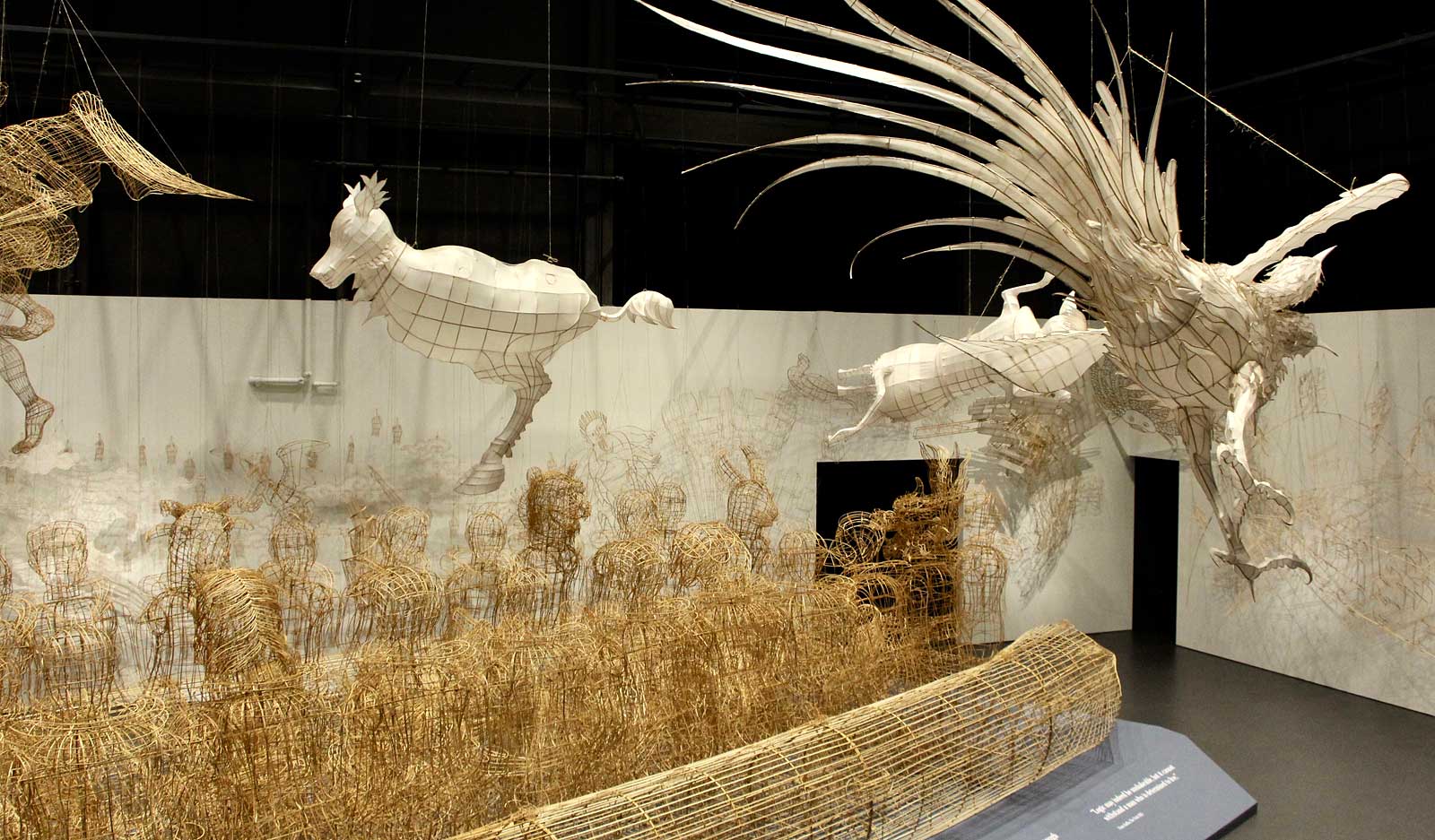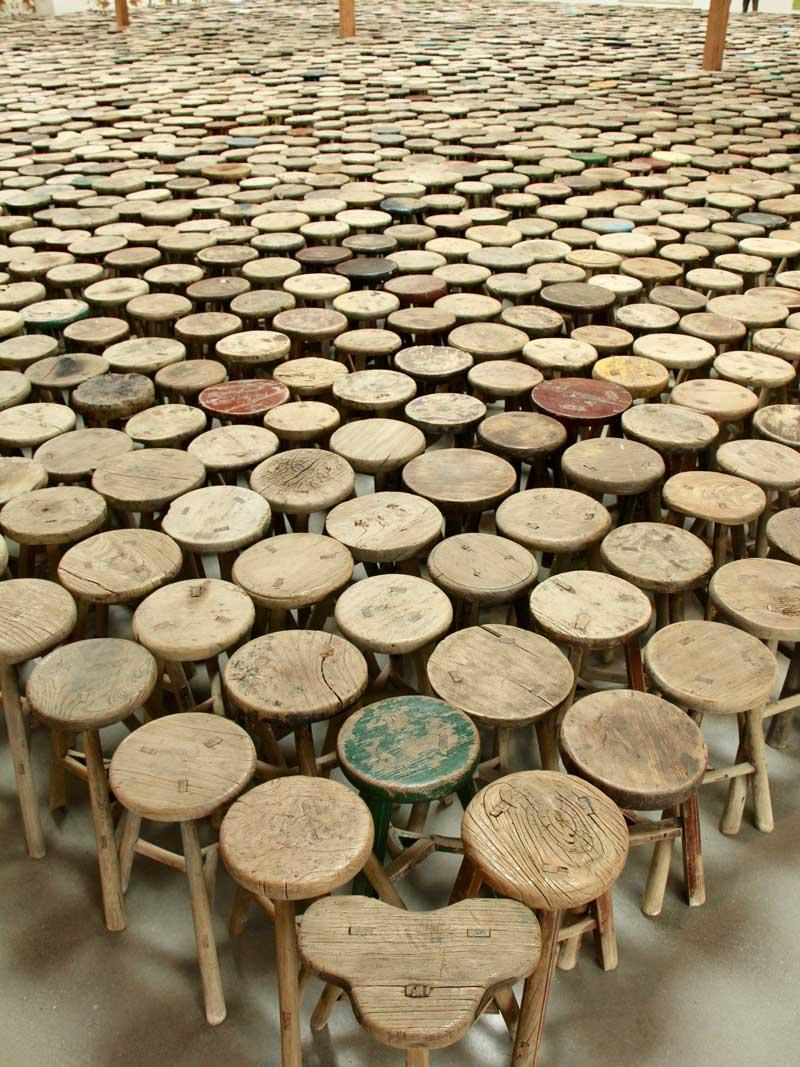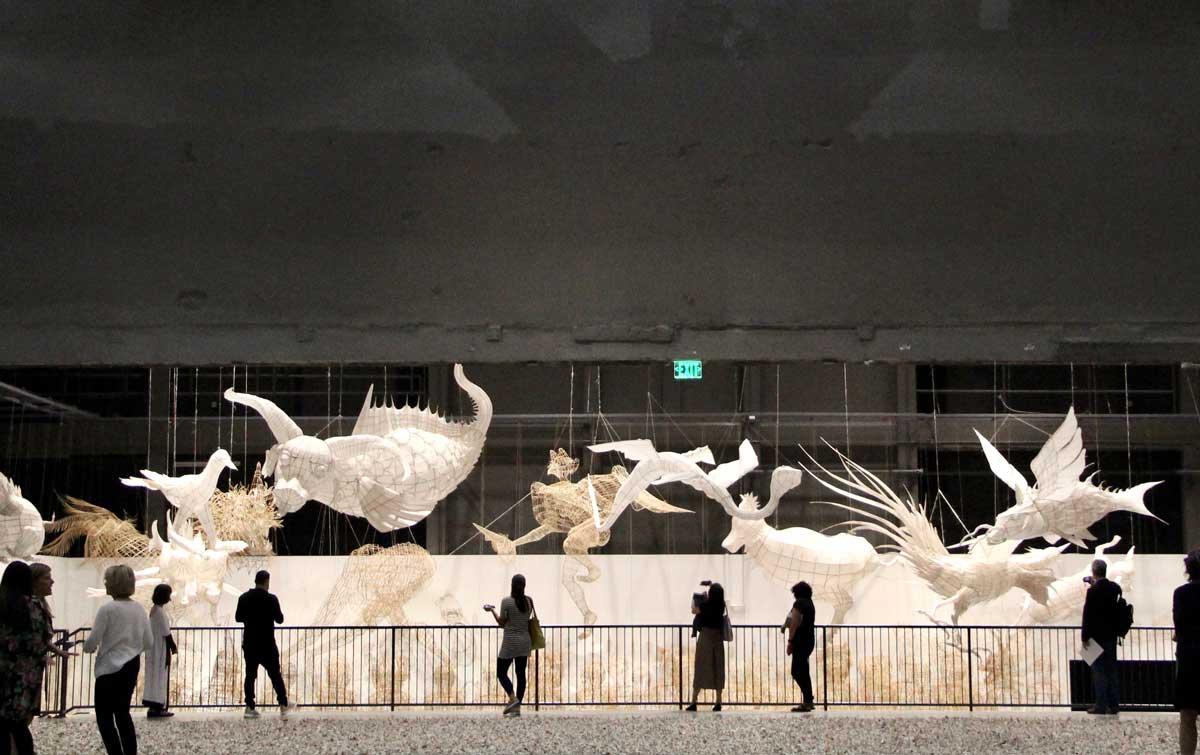This autumn it’s Ai time in Los Angeles with artist-activist Ai Weiwei bringing not one but three solo shows to the West Coast culture hub. Connecting them is the artist’s customary blending of tradition and modernism, along with common themes advocating for human rights.
Life Cycle, at Marciano Art Foundation through March 3, features a new work of the same name, a massive installation of bamboo figures in a bamboo pontoon boat. It’s an extension of his 2017 installation, Law of the Journey, a similar construct made of inflatable PVC rubber. Cao/Humanity, at UTA Artist Space through December 1, is a more intimate show featuring recent sculptures in glass, marble and porcelain. And Zodiac, inaugurating former MOCA director Jeffrey Deitch’s new Hollywood space through January 5, is a mini-retrospective including a new iteration in LEGO blocks of the artist’s 2010 bronze sculpture series, Circle of Animals/Zodiac.
“It started with my fascination about my son’s LEGOS,” Ai says of an artwork that originated with his 2014-2015 Alcatraz installation, Trace, on political prisoners. Surveying that show’s 176 images of prisoners worldwide, he found that some were grainy or out of focus, so he used pixelation as an equalizer. For the new project, LEGO bricks became a 3-D equivalent of pixelation. But the LEGO company had a policy against using the toys for political purposes and would not cooperate. So, as he has so often in the past, Ai turned to social media.
“People started donating their children’s LEGOS to me. We had cars with open sunroofs, and people dropped their LEGOS in: 20 cars full of LEGOS everywhere, globally. That generated a discussion about censorship. After that, the LEGO company contacted me to say they made a mistake and they will abandon that policy.”
It’s a common tactic for Ai, as when he secured his own freedom following a 2011 arrest for tax evasion. After serving three months, international pressure spurred by social media became too much for Chinese authorities to bear. Observers claim the real reason for his arrest was for criticizing the handling of underprivileged citizens during the 2008 Beijing Olympic Games and for drawing attention to subpar construction standards in the wake of an 8.0 earthquake that struck Sichuan, claiming 5,385 victims, most of them children.
“I’ve had such a long struggle with authority and went on the internet and did a lot of social programs, filming and stuff,” says Ai. He left Beijing in 2015, around the time that the international refugee crisis became central to his work. It is reflected in works like Life Cycle and Law of the Journey as well as his 2017 documentary, Human Flow, which he calls his “personal tribute to this world crisis of humanity.”
Life Cycle is the final piece created in his Beijing studio before it was bulldozed by authorities. The compound sat on a plot of grassy land, giving it the Chinese nickname, Cao Chang De. “On the internet, ‘cao’ means fuck. So we cannot use ‘fuck,’ so we use ‘cao,” he explains. “It’s to express yourself and not obey censorship. So, I thought I should make a sculpture of cao, cut it like grass. It’s very difficult.”













































